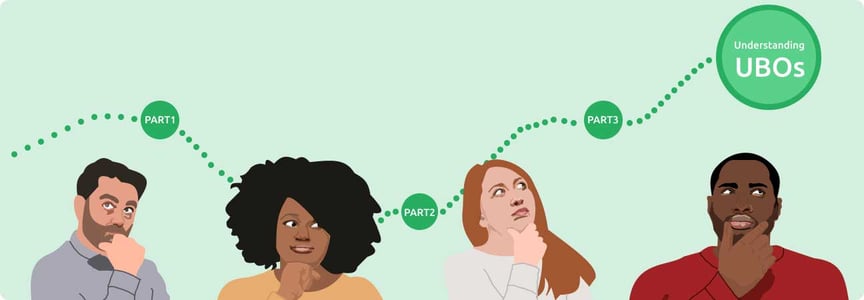The aim of this three-part series is to connect the dots between the what, why and how of identifying Ultimate Beneficial Owners (UBO’s). So far we have taken a closer look at what UBO’s are and why they matter, what the challenges are when trying to identify UBO’s and so to conclude our series we will look at how Accountable Institutions can identify and manage UBOs.
 How can Accountable Institutions Identify and Manage UBOs?
How can Accountable Institutions Identify and Manage UBOs?
Assessing a UBO is relatively straightforward for a publicly listed company or entities with clear direct shareholders, but it can become more complex for privately-owned companies where ownership is concealed by layers of indirect ownership.
These ownership structures may present higher levels of risk and require greater scrutiny to demonstrate all reasonable measures have been taken to identify the UBO and obtain a level of comfort. The answer to working through these structures is the generally accepted practice for compliance teams to adopt a risk-based approach with standard thresholds for UBO identification combined with a “three lines of defence” methodology to assist front line teams with their onboarding duties.
As a rule, beneficial ownership falls into three categories: controlling ownership, controlling rights and management control.
Whilst in the majority of cases the UBO will be a natural person majority shareholder, or person who holds at least 5% of the entity, not all entities have a majority shareholder or even shareholders at all. In this case, you can take a risk-based approach and use a process of elimination, looking first for ownership, and then control.
For example, ask yourself:
- Who has controlling ownership of the legal person? (e.g. the natural person/s with 5% or greater shareholding of a Pty)
- Who exercises controlling rights over the legal person? (e.g. the Elected Chairman of a residential management company)
- Who exercises executive management control over the legal person? (e.g. the CEO, CFO or COO of a listed company)
Due to the lack of public or accessible data, it is acceptable to ask clients for declarations around their ownership and structure and there is no need to go to lengths to verify it, however, taking a risk-based approach where there is doubt or if you considered a client particularly high risk, it may be wise to request an independently verified or certified organogram or company structure created or reviewed by an external accountant, auditor or attorney.
How to identify the types of ownership and calculate shareholding?
Beneficial Ownership can be visualised as a series of direct or indirect relationships. Direct relationships are those where a natural person holds direct ownership of the entity. Indirect relationships are those where a natural person holds ownership of the entity through one, or more, other entities.
The level of ownership you want to work with in terms of what percentage threshold you would consider a UBO, would be defined by your risk-based approach and your business risk appetite. It is generally accepted to use 5% shareholding to identify a UBO, but for higher-risk clients, or those required for the Foreign Account Tax Compliance Act (FATCA) or Common Reporting Standard (CRS), the threshold may be reduced to even lower.
By working through the layers of hierarchy, identifying the natural persons and calculating their indirect holdings, you can soon see how the ownership of the entity has been structured – and identify that elusive needle in the haystack.
 Want to know more? Join our Know Your Customer & Exploring Ultimate Beneficial Ownership training session for a more in depth discussion on how to implement due diligence processes and practices into your business.
Want to know more? Join our Know Your Customer & Exploring Ultimate Beneficial Ownership training session for a more in depth discussion on how to implement due diligence processes and practices into your business.
Request a live demo to see how tools like DocFox can assist you in seamlessly identifying UBO’s.
